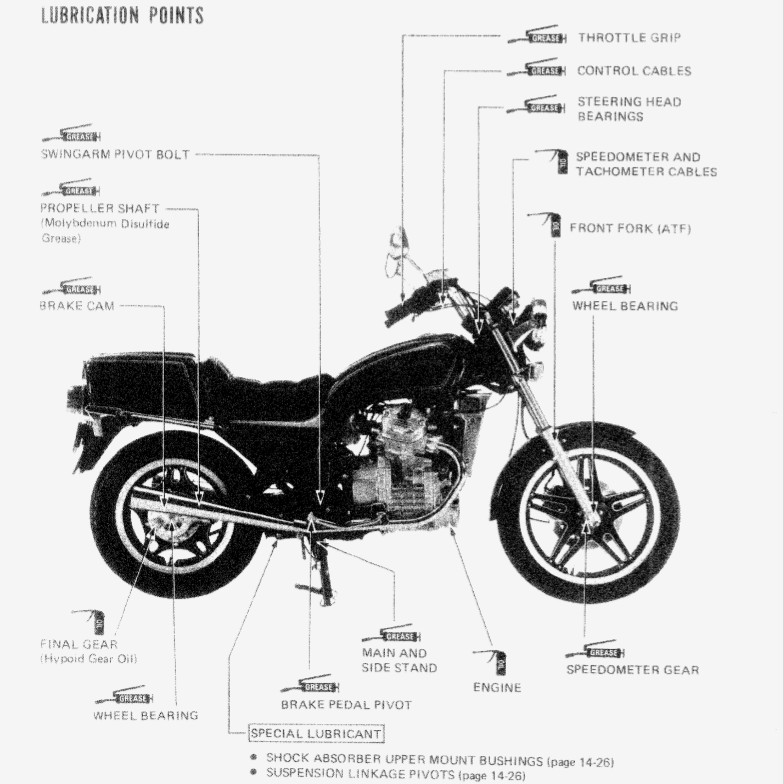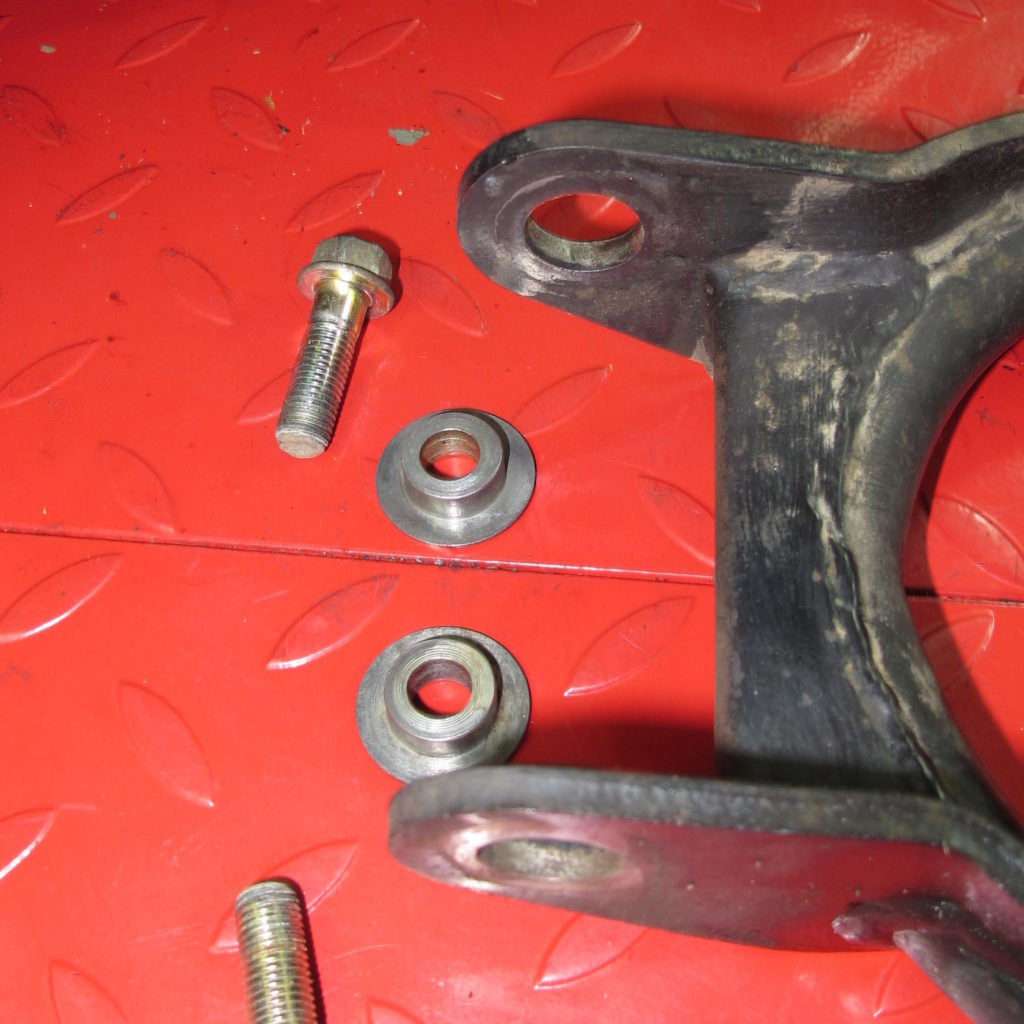Mileage: 29,404
Maintenance Summary:
- Greased center stand and rear brake pivot shaft with moly grease.
Often there are maintenance items that owners will ignore, even those who religiously perform other maintenance such as changing fluids. While a poorly maintained center stand may not result in a crash, it can result in a more expensive repair after the miles start to pile up. This diagram shows all of the various locations on the GL500 where lubrication is required.
 Today’s task is to grease the center stand and the rear brake pedal pivot, which is a shaft that transfers the brake pedal motion from the right side of the bike to the left.
Today’s task is to grease the center stand and the rear brake pedal pivot, which is a shaft that transfers the brake pedal motion from the right side of the bike to the left.
Unfortunately, the side stand bolt interferes with the exhaust system (power box), so I’m saving that maintenance task for another day.
As you can see in the next picture, the center stand pivots have not been lubricated in some time. One of the reasons that people shy away from this task is the challenges of removing and re-installing the spring. Honestly, it’s not that hard. I used a breaker bar as a T-handle to pull on a bit of wire hooked over the end of the spring to both remove, and re-install the spring. In the past I’ve also used vice grips.
 I cleaned off the rust and corrosion using a wire brush, Scotch bright pad, and kerosene before greasing the moving parts and re-installing. These parts support the entire weight of the bike when you’re putting it up on the center stand, more if you’re on the bike. So they can wear if not well lubricated. Fortunately, while these haven’t been serviced in a while, the center stand doesn’t exhibit any wear. It still feels tight.
I cleaned off the rust and corrosion using a wire brush, Scotch bright pad, and kerosene before greasing the moving parts and re-installing. These parts support the entire weight of the bike when you’re putting it up on the center stand, more if you’re on the bike. So they can wear if not well lubricated. Fortunately, while these haven’t been serviced in a while, the center stand doesn’t exhibit any wear. It still feels tight.
Here’s a look at the underside of the bike with the center stand removed. You can also see the side stand — which appears to be missing a lock nut. Unfortunately the side-stand bolt can’t be removed with the exhaust in place.
The brake pivot was also greased. All thats required to do this job is to remove the rear brake pedal from the right side and then slide the shaft out on the left side of the bike. It will clear the frame. I completely removed the shaft from the bike and then cleaned and greased it before re-installing.
 As you can see, I removed the link rod going to the rear brake before pulling the pivot shaft. The easiest way to do this is to first disconnect the link rod at the rear brake. This allows the pivot rod to rotate making it easier to access and remove the cotter pin.
As you can see, I removed the link rod going to the rear brake before pulling the pivot shaft. The easiest way to do this is to first disconnect the link rod at the rear brake. This allows the pivot rod to rotate making it easier to access and remove the cotter pin.
The pivot shaft isn’t under that much pressure, but it does have a lot of surface area. Grease will ensure that the brake operation is smooth and that corrosion won’t cause binding.


